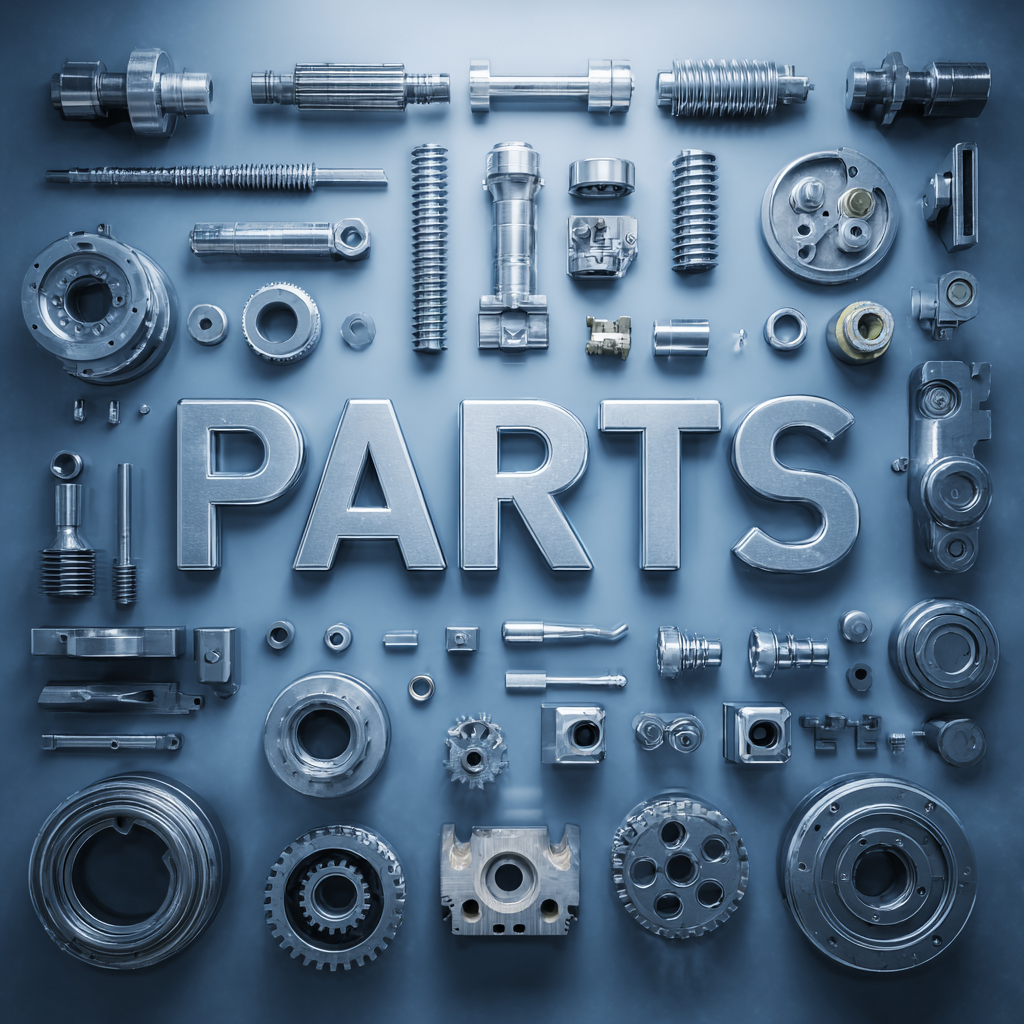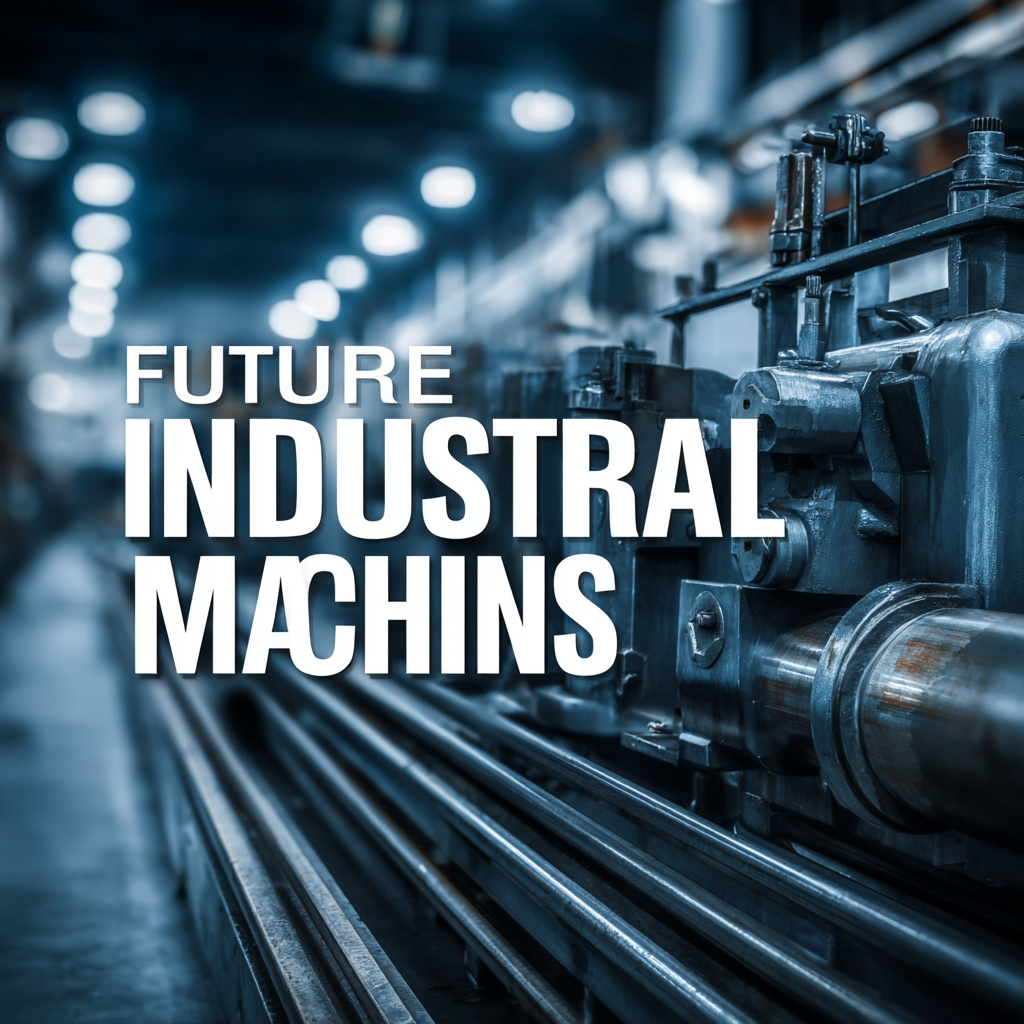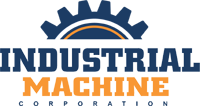Future Trends in Industrial Machine Parts Market Analysis for 2025
In the ever-evolving landscape of manufacturing and engineering, the significance of the parts of industrial machines cannot be overstated. As we look forward to 2025, it is imperative to analyze the emerging trends that will shape the market for these critical components. This blog delves into the intricate dynamics of industrial machine parts, examining factors such as technological advancements, sustainability initiatives, and shifts in consumer demand. By understanding these trends, manufacturers and industry stakeholders can better prepare for the challenges and opportunities that lie ahead. Join us as we explore the future of industrial machine parts, providing insights that will not only enhance operational efficiency but also drive innovation in the sector.

Emerging Technologies Shaping the Future of Industrial Machine Parts by 2025
The industrial machine parts market is poised for significant transformation by 2025, driven by emerging technologies that are redefining operational efficiency and product development. One of the most impactful advancements is the integration of additive manufacturing, commonly known as 3D printing. This technology enables manufacturers to create complex geometries and lightweight components that were previously unfeasible, optimizing performance while reducing material waste. As companies strive to implement sustainable practices, 3D printing will play a crucial role in minimizing the carbon footprint associated with traditional machining processes.
In addition to additive manufacturing, the rise of smart manufacturing facilitated by Internet of Things (IoT) devices will further reshape the landscape of industrial machine parts. IoT sensors allow for real-time monitoring of machinery, providing detailed insights that enhance predictive maintenance and reduce downtime. This connectivity not only streamlines production processes but also fosters data-driven decision-making, enabling manufacturers to adapt quickly to changing market demands. As these technologies converge, the industrial machine parts market will witness a dynamic shift towards more automated, efficient, and sustainable production paradigms, elevating the standards for innovation in the years to come.
Key Drivers Fueling Growth in the Industrial Machine Parts Market
The industrial machine parts market is poised for significant growth in the coming years, driven by advances in automation, artificial intelligence, and machine learning technologies. As industries prioritize efficiency and productivity, the demand for specialized machine parts that enhance operational capabilities is expected to rise sharply. In particular, the rise of smart robotics, which integrates advanced functionalities into manufacturing processes, is reshaping how businesses approach production, leading to a transformation in their supply chains.
China, as a major player in the global industrial landscape, has witnessed a substantial increase in its robotics production. In 2023, the production scale reached approximately 429,500 units, claiming 51% of the global shipment share and generating impressive market revenues. The ongoing investments in research and development, coupled with structural reforms within the manufacturing sector, will further stimulate innovation in machine parts design and production. These trends not only highlight the core drivers of growth in the market but also set the stage for groundbreaking technologies that will redefine the industry by 2025.
Predictive Maintenance: Enhancing Longevity and Efficiency of Machinery
Predictive maintenance is set to revolutionize the industrial machine parts market by significantly enhancing the longevity and efficiency of machinery. As manufacturing operations become increasingly reliant on sophisticated equipment, the need for proactive maintenance strategies has never been more critical. By leveraging advanced technologies such as IoT sensors and data analytics, companies can monitor the real-time performance of their machines to identify potential issues before they escalate into costly failures. This shift from reactive to predictive maintenance not only minimizes downtime but also optimizes the utilization of machinery, ultimately leading to increased productivity.
Moreover, the integration of predictive maintenance strategies is expected to drive innovation in machine components and materials. Manufacturers are likely to invest in durable, high-performance parts that can withstand the demands of continuous monitoring and analytics. This emerging trend will encourage a collaborative approach between equipment producers and their suppliers, fostering an ecosystem where parts are designed for longevity and better performance under predictive maintenance regimes. As the industrial landscape evolves, businesses that embrace predictive maintenance will not only enhance the lifespan of their machinery but also secure a competitive advantage in the marketplace.
Sustainability Trends Influencing the Production of Industrial Parts
 As we look toward 2025, the industrial machine parts market is set to be profoundly influenced by
sustainability trends that prioritize eco-friendly production methods. Manufacturers are increasingly
adopting practices that reduce carbon footprints and minimize waste, responding to consumer demand for
greener products. This shift involves utilizing recycled materials, implementing energy-efficient processes, and investing in sustainable technologies that help
companies meet environmental regulations. The integration of these practices not only appeases environmentally conscious consumers but also enhances
brand reputation and loyalty.
As we look toward 2025, the industrial machine parts market is set to be profoundly influenced by
sustainability trends that prioritize eco-friendly production methods. Manufacturers are increasingly
adopting practices that reduce carbon footprints and minimize waste, responding to consumer demand for
greener products. This shift involves utilizing recycled materials, implementing energy-efficient processes, and investing in sustainable technologies that help
companies meet environmental regulations. The integration of these practices not only appeases environmentally conscious consumers but also enhances
brand reputation and loyalty.
Moreover, the push for sustainability is driving innovation in the design and production of industrial parts. Companies are exploring alternative materials that offer both performance and reduced environmental impact. Biodegradable composites and advanced polymers are gaining traction, allowing manufacturers to produce parts that are not only durable but also align with green initiatives. Additionally, additive manufacturing techniques, such as 3D printing, are emerging as game-changers by enabling precise material usage and reducing excess waste. As these sustainability trends reshape the industrial machine parts market, businesses that prioritize ecological responsibility will likely lead the way in this evolving landscape.
The Impact of IoT and Digital Twin Technologies on Manufacturing Processes
In the rapidly evolving landscape of manufacturing, the integration of IoT (Internet of Things) and digital twin technologies is set to revolutionize the way industrial machine parts are designed, produced, and maintained. IoT enables seamless connectivity and data exchange between machines, allowing for real-time monitoring and analysis of production processes. This connectivity provides manufacturers with actionable insights into machine performance and part wear, facilitating proactive maintenance and reducing downtime. As a result, companies can optimize their operational efficiency, leading to significant cost savings and increased productivity.
Digital twin technology complements IoT by creating a virtual replica of physical assets, processes, and systems. This allows manufacturers to simulate different scenarios and predict how changes in the manufacturing process will affect outcomes. For instance, by modeling machine parts' behavior under various conditions, manufacturers can optimize designs before physical production. This not only accelerates the innovation cycle but also enhances the quality and reliability of machine parts. As these technologies continue to advance, the industrial machine parts market is likely to undergo transformative changes, with manufacturers becoming increasingly agile, data-driven, and responsive to market demands.

